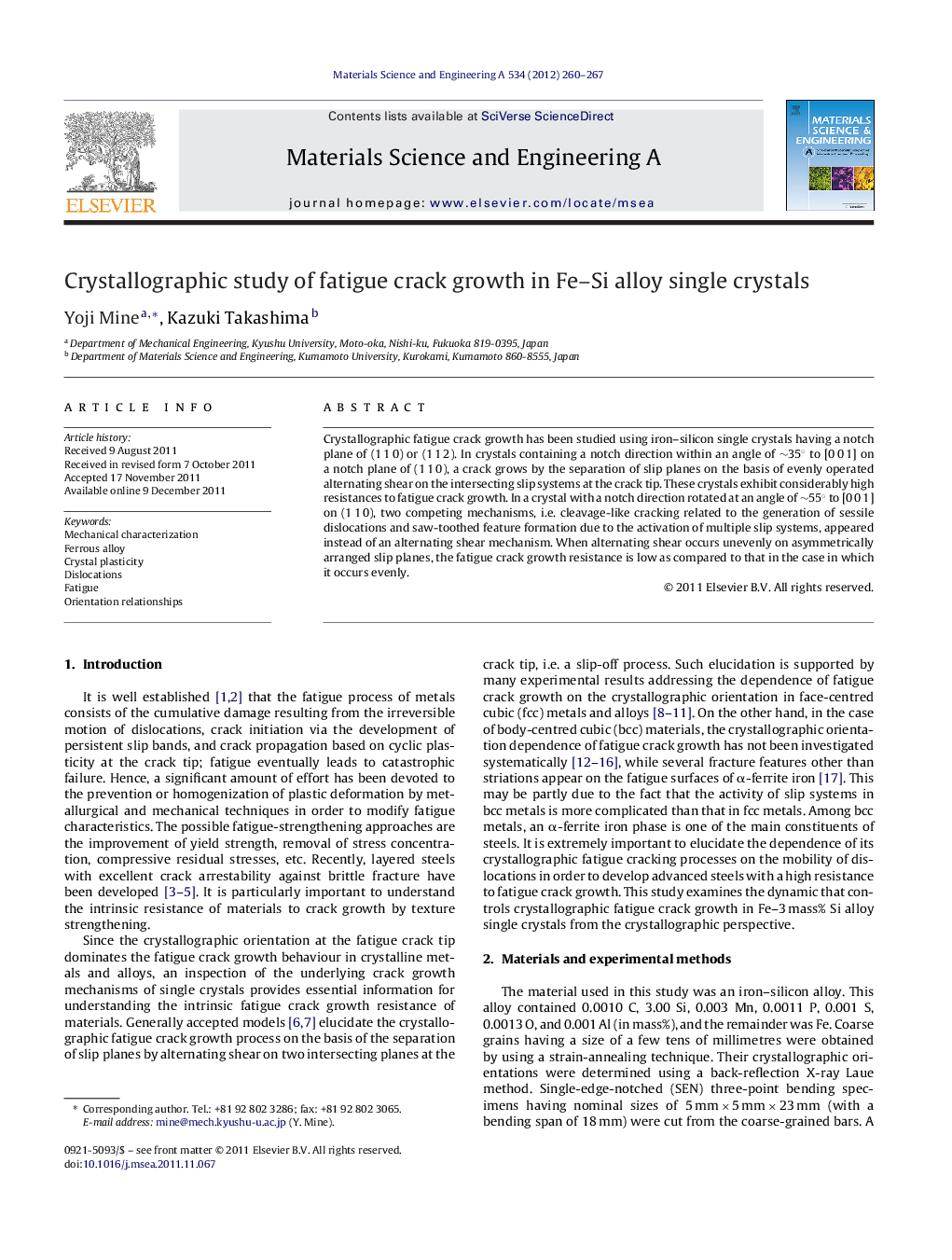| Article ID | Journal | Published Year | Pages | File Type |
|---|---|---|---|---|
| 1577571 | Materials Science and Engineering: A | 2012 | 8 Pages |
Crystallographic fatigue crack growth has been studied using iron–silicon single crystals having a notch plane of (1 1 0) or (1 1 2). In crystals containing a notch direction within an angle of ∼35° to [0 0 1] on a notch plane of (1 1 0), a crack grows by the separation of slip planes on the basis of evenly operated alternating shear on the intersecting slip systems at the crack tip. These crystals exhibit considerably high resistances to fatigue crack growth. In a crystal with a notch direction rotated at an angle of ∼55° to [0 0 1] on (1 1 0), two competing mechanisms, i.e. cleavage-like cracking related to the generation of sessile dislocations and saw-toothed feature formation due to the activation of multiple slip systems, appeared instead of an alternating shear mechanism. When alternating shear occurs unevenly on asymmetrically arranged slip planes, the fatigue crack growth resistance is low as compared to that in the case in which it occurs evenly.
► We studied fatigue crack growth in Fe–Si crystals from crystallographic perspective. ► Crystals where slip-off occurs on symmetric systems show high resistance to cracking. ► Appearance of slip-off depends on crack direction as well as slip-plane shear stress. ► Cleavage-like cracking appears in crystals oriented unfavourably to slip-off process. ► When slip-off occurs on asymmetric systems, crack growth resistance is degraded.
